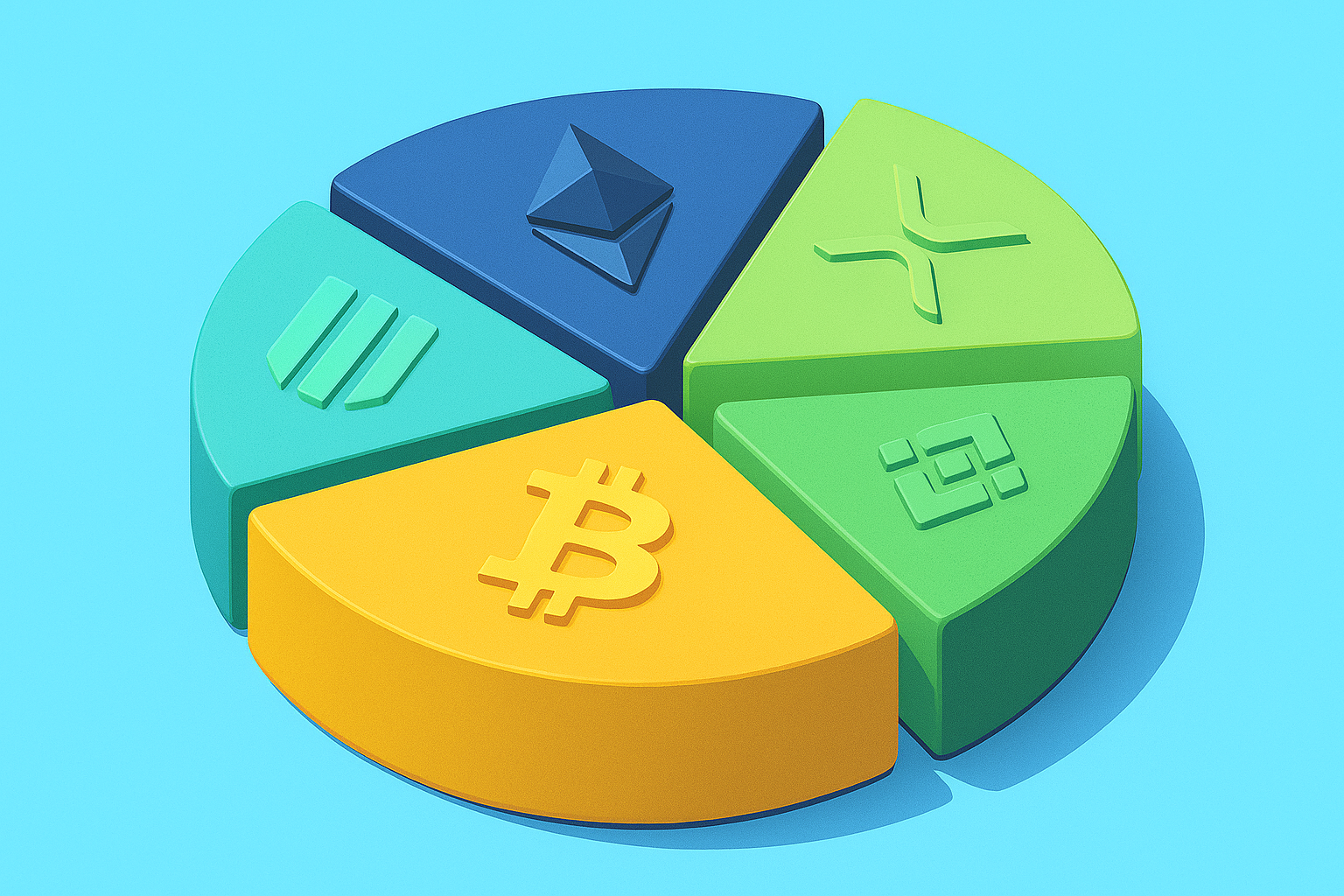Crypto Asset Management
Crypto asset management is the disciplined practice of tracking, allocating, buying, selling, and securing digital assets (coins, tokens, stablecoins, DeFi positions, NFTs, and tokenized real-world assets) so your portfolio meets a target return and risk profile. It can be done by yourself, by a professional advisor/trader, or by automated platforms (robo-advisors or bots) that handle rebalancing and execution.
How Crypto Asset Management Works
Crypto asset management is about managing your digital investments — just like traditional investing, but with cryptocurrencies and other blockchain-based assets. The goal is to grow your portfolio while managing risk in a structured way.
Typical Process:
- Setting objectives and risk tolerance
Clarify investment goals, time horizons, and acceptable volatility. This helps shape the portfolio strategy. - Asset selection and allocation
Decide which assets (e.g., Bitcoin, Ethereum, stablecoins) fit your strategy and how much weight each should hold. This mix balances risk and return. - Execution and custody
Once you know what to buy, place trades via exchanges or OTC platforms. Then decide how to store your assets:- Self-custody: You control private keys via hardware/software wallets.
- Custodial services: A third party (exchange or regulated provider) stores your assets.
- Monitoring and rebalancing
Track performance and periodically rebalance to stay aligned with your goals. - Risk controls and reporting
Use stop-loss levels, position limits, and diversification. Automation tools assist with continuous monitoring and rebalancing.
In practice, crypto asset management blends traditional investing principles with blockchain technology. Success requires both financial knowledge and technical understanding.
Why People Use Crypto Asset Management
Managing crypto alone can be confusing or risky, especially for beginners. Without a clear plan, mistakes can hurt your results.
Common Problems:
- Chasing short-term moves (FOMO): Frequent trading often leads to higher fees and smaller profits.
- Poor key/wallet management: Losing keys can mean permanent loss of funds.
- Overexposure to one coin: Concentration increases risk.
- No clear plan: Without buy/sell/rebalance rules, emotional decisions dominate.
A managed approach brings structure and discipline — crucial in such a volatile market.
Key Components of Crypto Portfolio Management
- Diversification: Don’t put all your eggs in one basket. Spread investments to reduce risk.
- Regular rebalancing: Restore your portfolio to target allocations when markets move.
- Risk management strategies: Define position sizes, use hedges, and keep stablecoin reserves.
- Continuous monitoring: Track portfolio value, asset performance, and strategy relevance.
Common Crypto Asset Types — Short Glossary
- Coins: Native blockchain currencies (e.g., Bitcoin, Ether).
- Tokens: Assets built on another chain (e.g., ERC-20 tokens, governance tokens).
- Stablecoins: Pegged tokens (e.g., USDC, USDT) used for liquidity and yield.
- NFTs: Unique tokens representing assets (art, collectibles).
- DeFi positions: Liquidity pools, lending, or yield farming.
- Tokenized RWAs: Real-world assets issued as tokens.
Each type has distinct liquidity, custody, and risk traits.
Tools & Platforms for Crypto Asset Management
1. Exchanges and Brokerages
- Centralized exchanges (CEXs): Bitvavo, Binance, Coinbase — beginner-friendly.
- Decentralized exchanges (DEXs): Uniswap, PancakeSwap — require more technical care.
Beginners typically start with CEXs.
2. Custody Providers and Hardware Wallets
- Hardware wallets: Ledger, Trezor — best for long-term storage.
- Custody services: Third-party storage for convenience but less control.
A common strategy: keep trading funds on exchanges, long-term holdings in hardware wallets.
3. Portfolio Trackers and Dashboards
Tools that consolidate balances and performance:
- Examples: CoinStats, Zerion, CoinMarketCap Portfolio.
4. Automated Platforms and Bots
Automation tools can:
- Invest small amounts regularly
- Auto-rebalance portfolios
- Run trading strategies (e.g., grid trading)
Useful for maintaining discipline — but understand them before using.
5. Analytics and On-Chain Tools
Research and monitor blockchain activity:
- Examples: Etherscan, DeFiLlama, other blockchain explorers.
Choosing the Right Tools
- Long-term focus: Prioritize hardware wallets and custody.
- Active trading: Look for low-fee, high-speed exchanges.
- Record-keeping: Use trackers with exportable transaction data.
Key takeaway: Choose tools that match your experience and comfort level. Start simple, stay secure, and keep learning.
Risk Management and Security in Crypto
Security is as important as strategy. Follow best practices:
- Use hardware wallets for long-term holdings.
- Consider multisig for large balances.
- Use reputable custodians for managed accounts.
- Keep minimal balances on exchanges.
- Maintain offline backups for seed phrases.
- Factor smart-contract risk and prefer audited protocols.
Because crypto is irreversible, operational risk management is essential.
Practical Tips for Successful Crypto Management
- Set clear goals and allocation rules.
- Keep an emergency stablecoin buffer.
- Automate repetitive tasks (DCA, rebalancing).
- Limit position sizes and define loss tolerances.
- Review fees and taxes regularly.
- Protect private keys and avoid online storage.
Due Diligence: What to Check Before You Buy
- Project fundamentals: Team, tokenomics, code quality.
- Liquidity: Ability to enter/exit positions.
- Security: Audit history, prior exploits.
- Regulatory and tax factors: Local legal implications.
- Counterparty risk: Reliability of exchanges or custodians.
Conclusion
Crypto asset management brings structure and discipline to a volatile market. Whether self-managed, automated, or professional, success depends on clear goals, diversification, and strong security.
Because crypto operates nonstop and relies on private keys, risk management and consistency are key. Steady, disciplined investing generally outperforms emotional reactions.
FAQ
Can you hire someone to manage your crypto?
Yes — crypto-focused financial advisors and fund managers offer managed accounts or discretionary services. They can handle custody via regulated partners. Always verify credentials, custody setup, and fees.
How much money do you need for wealth management?
It varies widely:
- Traditional firms often require hundreds of thousands or more.
- Some robo-advisors and boutique crypto managers accept smaller amounts.
Always check each firm's minimums and fee structure before committing.






%201.svg)

.png)



.avif)